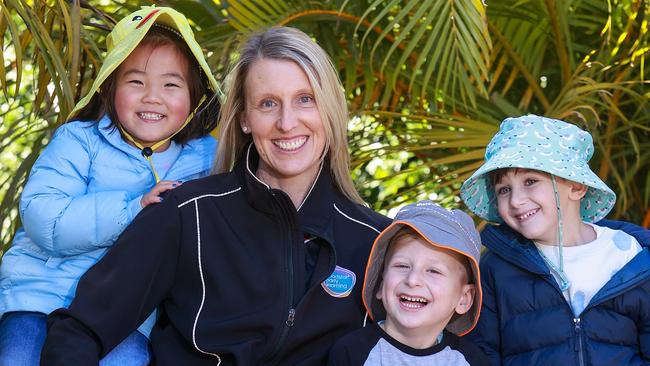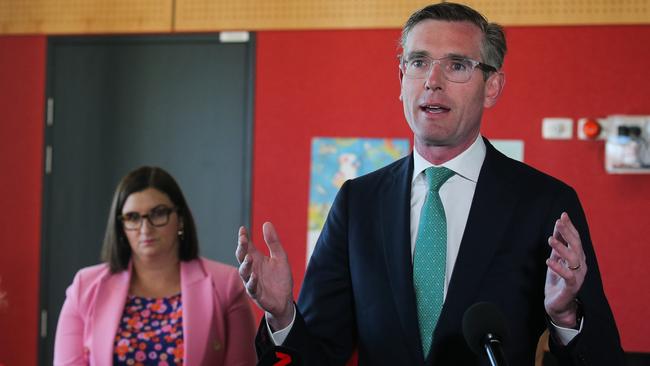Centres closed, ratios scrapped as NSW preschools feel pinch of teacher shortage
A staffing crisis is forcing preschools to turn families away or abandon child-to-carer ratios — and industry insiders warn that the situation is only going to get worse.
Education
Don't miss out on the headlines from Education. Followed categories will be added to My News.
An under-the-radar staffing crisis has hit NSW preschools, with a lack of teachers forcing some centres to close their doors and turn families away.
More than 3200 early childhood educator roles are vacant across the state according to online listings, with one national provider confirming 10 per cent of its workforce was missing.
It comes as union data revealed more than a third of preschool teachers planned to leave the profession soon, with low pay and excessive workloads the main reasons for the exodus.
Educational leader at Lane Cove’s Birrahlee Preschool Tash Smith said the situation had worsened in the past couple of months.
“We’ve had to completely close some of our eight classrooms a handful of times because we just didn’t have any staff and the casual pool was dry,” Ms Smith said.

“We’ve had to send emails to parents and say: ‘Sorry, we’re closed this week, don’t come in’, which is unheard of.”
Ms Smith said educators were fatigued and feeling undervalued, and Covid and the flu were also taking their toll.
“Strain and exhaustion is resulting in staff mental health days, which we’ve never seen before,” she said.
Teacher at Goodstart Early Learning Carlton, Sonia McLeod, said the crisis was being felt right across the industry.
“I think it’s a combination of things like pay and conditions, people falling sick and Covid causing delays in training that have all hit at the same time,” Ms McLeod said.
Unlike the teacher shortage plaguing primary and high schools, early learning centres don’t have the option to leave children unsupervised. However, about 15 per cent of the state’s centres have been issued a temporary waiver, exempting them from the usual child-to-carer ratios set by national regulators.
“We’re dealing with a situation where teachers are working 10 hours a day, they don’t even get 30 minutes for lunch, and they don’t get school holidays off because they’re working in vacation care,” independent Education Union of Australia early childhood services organiser Kate Damo said.
Data collected by another union representing preschool teachers, the United Workers Union, last year revealed 37 per cent of early childhood educators did not plan to stay in the industry long term, and 26 per cent planned to quit within 12 months.
Of those not planning to leave, 46 per cent still thought about quitting “all or most of the time”.

United Workers early education executive director Helen Gibbons said last year’s data was becoming reality.
“They’re leaving in droves and those that are staying have really poor morale, and the workload is now worse because their colleagues are gone,” Ms Gibbons said.
The Perrottet government hopes a $281.6 million boost to the sector could be the solution, investing in 18,000 new childcare jobs in the most recent state budget.
“I have had many conversations with early childhood teachers and educators, peak bodies, service directors, and stakeholders about the need to invest in our early childhood education and care workforce,” Early Learning Minister Sarah Mitchell said.
Goodstart Early Learning head of advocacy John Cherry said he looked forward to seeing the plan in greater detail.
“Our vacancy rates have gone up exponentially, with one in 10 permanent roles unfilled, and that’s higher in NSW than other states,” Mr Cherry said.
“We have an immediate crisis that’s going to get worse next year when new childcare subsidies take effect, then again when the state rolls out its pre-kindergarten plan.
“We pay 4 per cent above the award wage but we can’t pay more unless we charge families more, which they can’t afford, so we really need government investment.”
Got an education news tip? Email emily.burley@news.com.au




